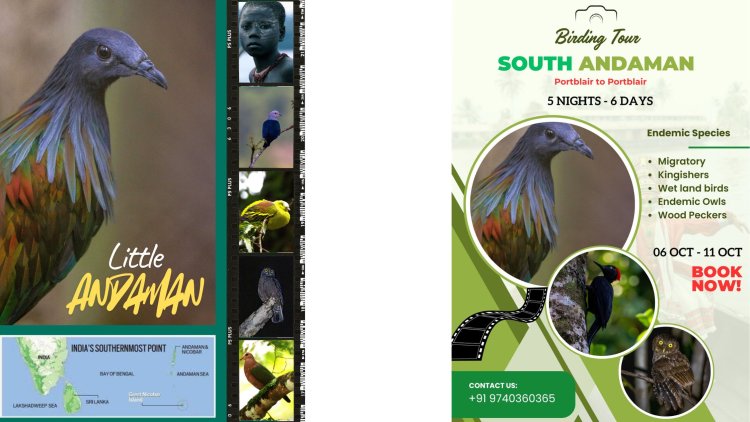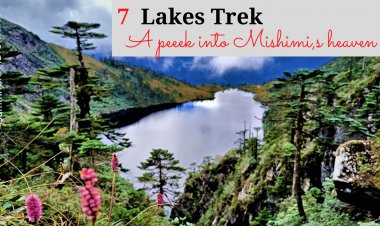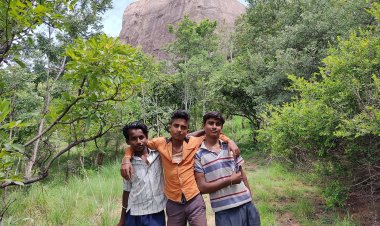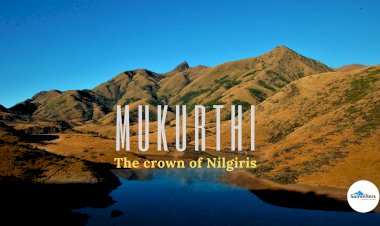Endemic birding tour of South Andamans
A piece of land surrounded by water lies South East of mainland of India.Incredibly biodiverse archipelago of 572 islands is chock-a-block with pristine beaches, crystal clear waters and dense virgin forests that are home to some of the world’s most ferocious game fish and a host of endemic birds not found anywhere else on this planet. Your guess is RIGHT if you are thinking of Andaman & Nicobar Islands. !
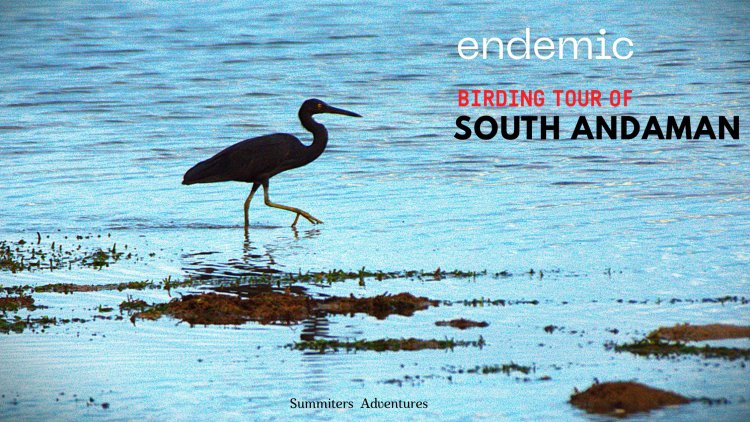
As the thick veil of clouds raised above, Cirrus and Nimbus seemed to surpass all enveloping the vast expanse of sky !.Amidst a bit of jostling and turbulence. A achipelego, shimmering in golden light, seemed like dancing to the tune of sun kissed shores.The azure blue sea interpersed with emerald green lagoons glowing at dawn was a moment to behold !
We were fying at an altitude of 10,000 ft above North Sentinel Islands in andaman sea.
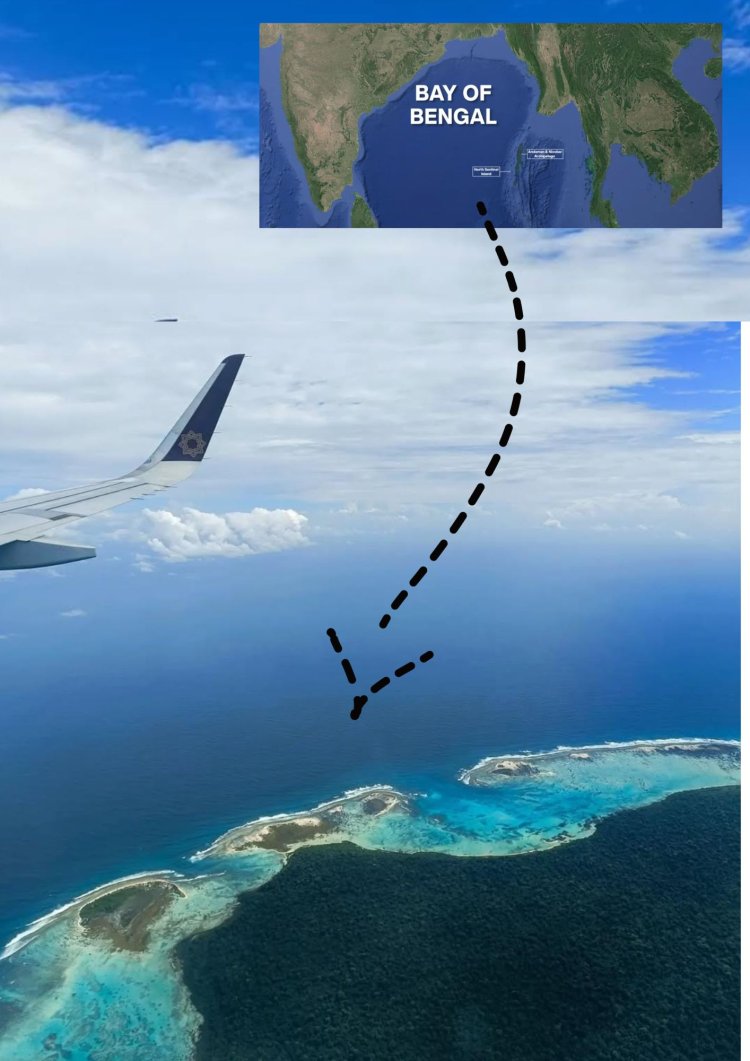
As excitement mounted. I soon heard that our flight is going to touch down in another 10 minutes at Veer Savarkar Airport ! - Vijayapuram
We were on a 10 day long, endemic birding tour of South Andamans.The accu weather predictions of heavy downpour however was a concern because of humidity in air.
We decided to begin our sighting with a sole and rare species in Middle Andaman region in Rangat, located about 150 km away from Portblair.
The Andaman and Nicobar Islands are a cluster of islands located between the Bay of Bengal and the Andaman Sea. Together they form one of the seven union territories of India.
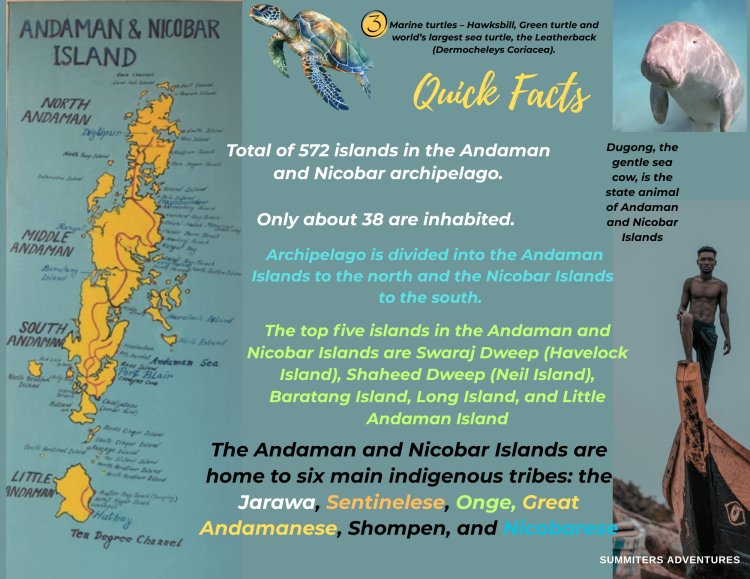
Though I had heard about the warblers, few migrant including Dusky Warbler to the rarely recorded Sakhalin Leaf Warbler. I still dont know what drew me to look for the enigmatic resident bird of Andaman !
Rangat
The ‘Andaman’ Pale-footed Bush Warbler —
A Lesser-known Bird of Andaman
(Urosphena pallidipes osmastoni).
Though i had a prior expereince of traveling in the island. My assumption of travelling 150 km enroute Jikathang - Jarawa region - Baratang was unimaginable.
Humidity and adding to it poor roads, long waits for convoy, delayed transfers at the launch - Overall journey made us exhausted beyond imagination.
During pit stops, i could sight few endemics Andaman clipper, Andaman Crested serpent Eagle.I could see a Common 4 wing, Blue Marmon and common birdwing ( State bird of Tripura ) flying in the bushes.
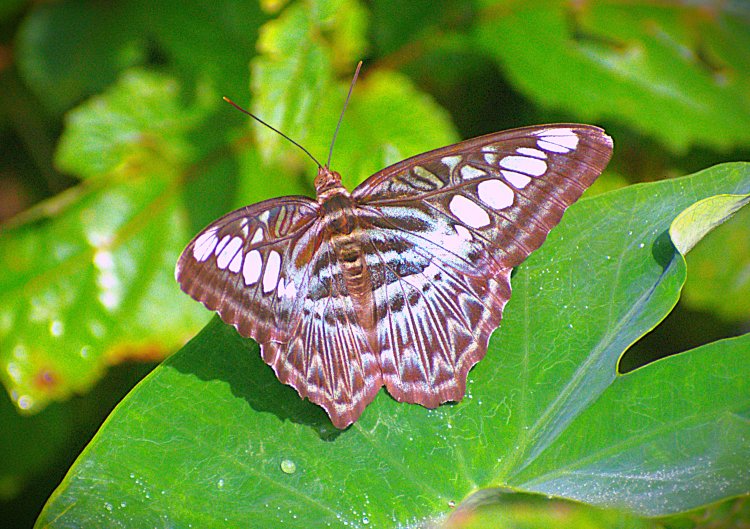
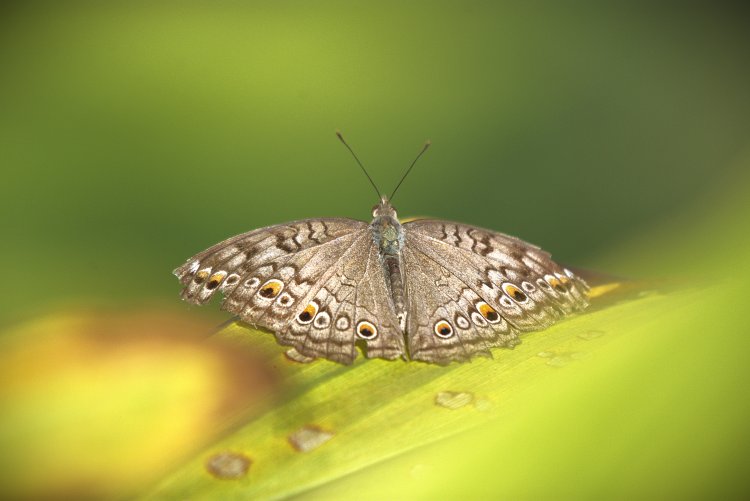
Our 14 hour journey to photograph a Warbler was not fruitful, and all our efforts went in vain. In a duration 0f 2 hours, after scanning and looking for it in thick vegetation we could just sight it moving at a lightning speed in the bushes and listen to its calls only.
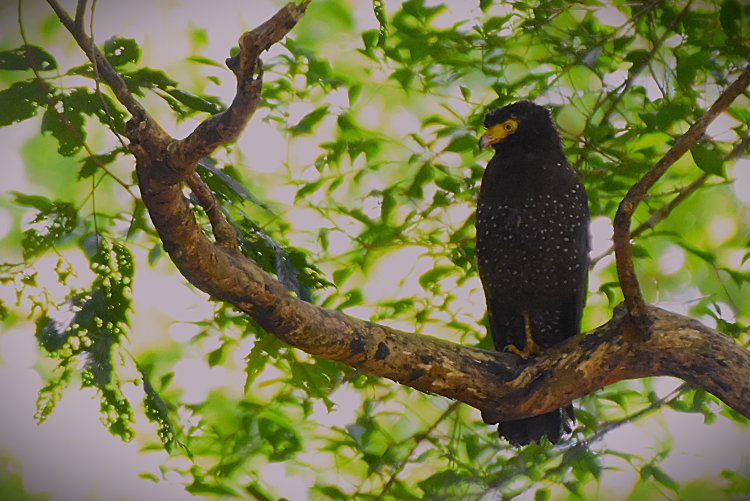
After a overnight stay. Next morning we decided to start in wee hours, leaving the bird undisturbed.Finally moved towards Portblair.
Chidiya Tapu Biological Park and Surrounding Area
This is a must visit place near Portblair. The sea shore and forest adjoining is a haven for birders.The morning session was to be spent in the forested areas of Chidiyatapu, the southern most part of the mainland which is an hour’s drive from Port Blair.
There is a Biological Park in here - Home for birds ( a euphemistic term for a zoo?) that houses a few very large animal open-air enclosures. Apart from that the park is densely forested with a variety of species of large and unusual trees each one conveniently labelled.
This is the place where we got to see the Andaman Shama, Andaman Serpent-Eagle, Monarch, Andaman Treepie, Golden plover, Asian Emerald Dove, Green shank, Brittle Star Fish, Violet Cuckoo, Red-breasted Parakeet, White-breasted Woodswallow, Long-tailed Parakeets, Pacific Reef Heron, Andaman Drongo, Mangrove Whistler and winter visitors like the, Pacific Swift during the day.
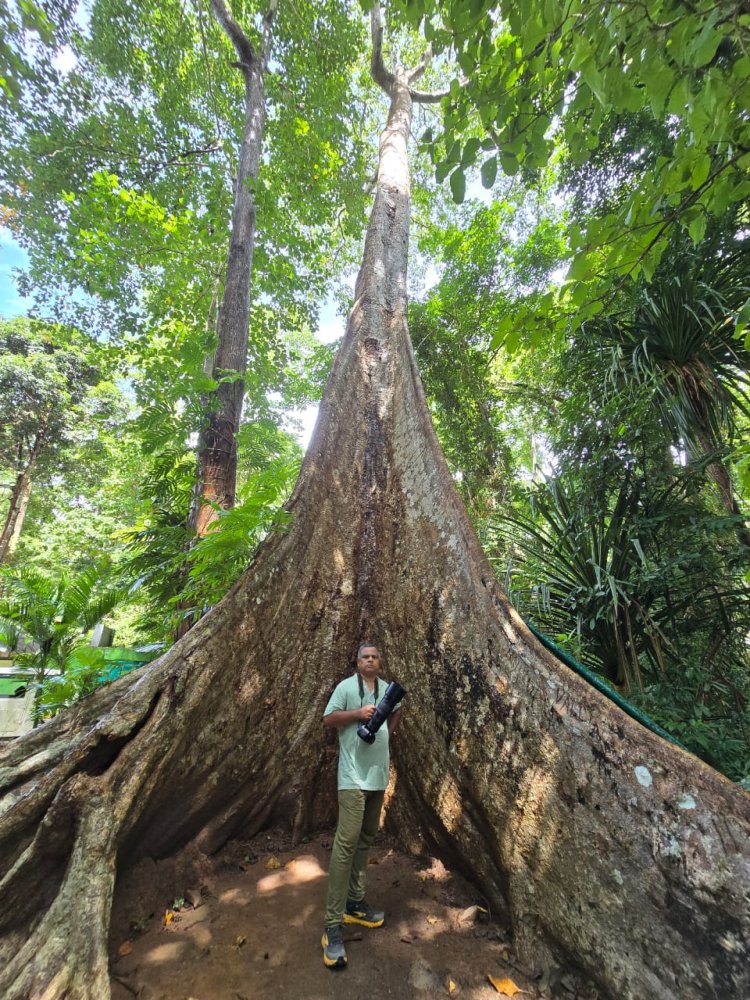
Massive Thipok Tree - At the Entrance
Known as Kapok tree - ( Ceiba pentandra )
Often called the "silk-cotton tree," the kapok is a giant of the rainforest
Andaman Shama
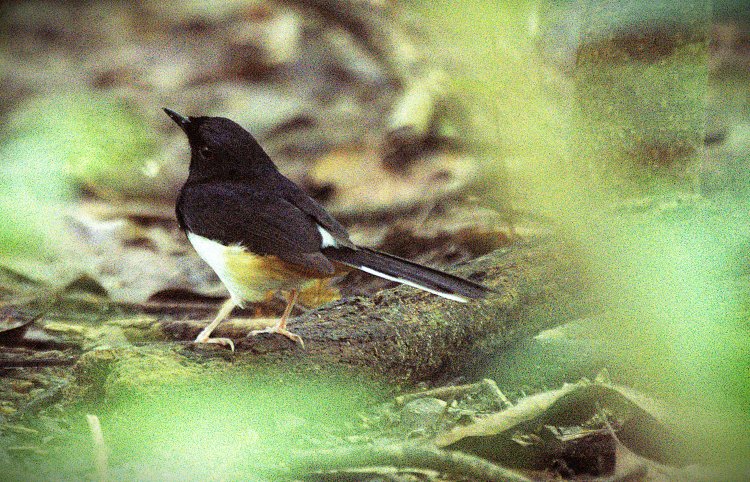
Violet Cuckoo
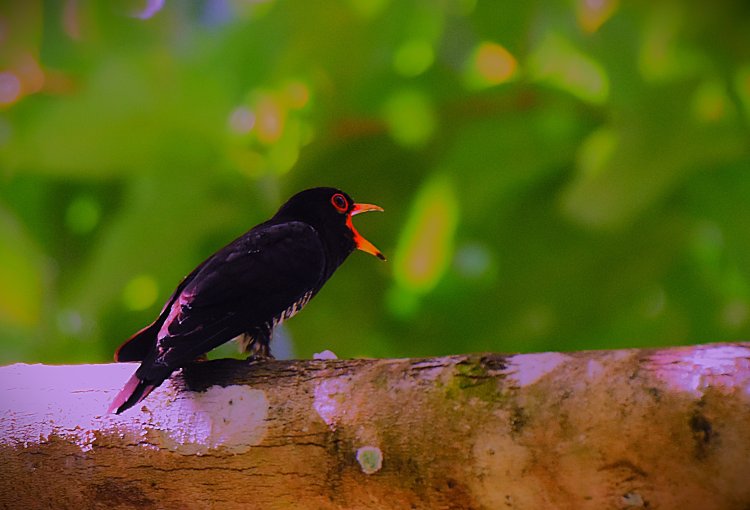
Pigeons of Andaman
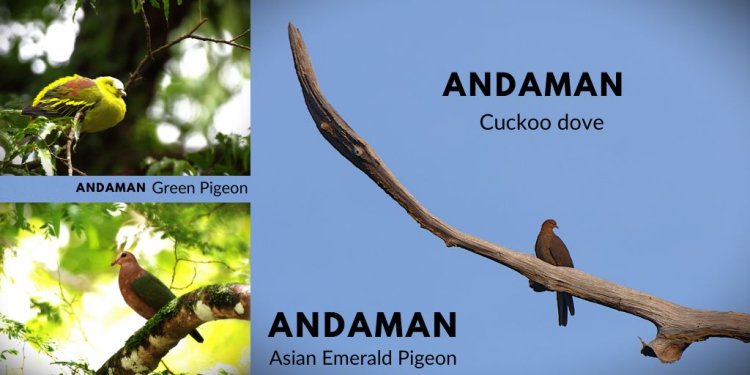
This was the place were we got our sightings of the very shy Andaman Crake. We got to see 2 of them. However they scrambled away they moment they saw us and thus did not allow us to photograph them
Chidiya tapu reminded me of fabulous sunset and serene surroundings of my previous visit during Scuba diving .
After a tea break, watching sunset we set off in search of owls, during the course we could accidentaly sight a palm civet clingling to Papaya fruit tree.Without disturbing it during its dinner time we could make few portraits in the course of time.
This is how it posed for the camera !
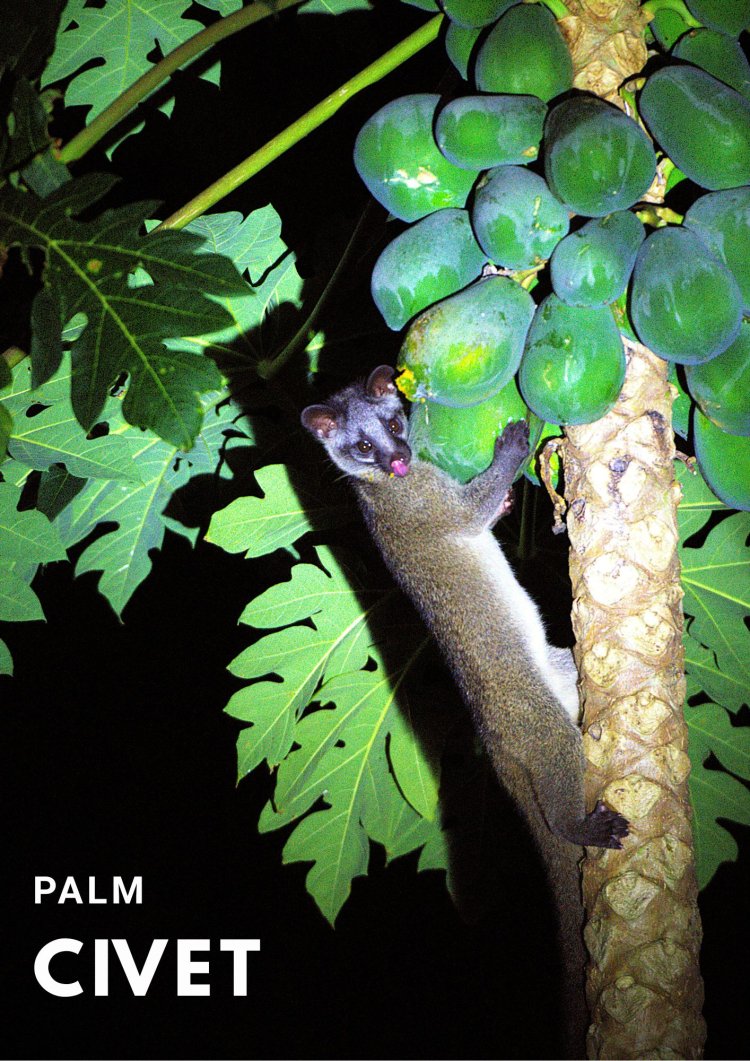
We spent the next hours negotiating our way under torchlight through the field and thickets. Within no time two - Humes Owl and Andaman Boo Book, & a Night Jar of the four owl species we were looking for got ticked off our list
And so ended day 1.
A day that more than met up with my expectations! We saw quite a few endemic species – all lifers – and could not wait for the next few days to unfold!
Kalatang
Another great site for some of the endemics.The place is full of forest cover and canopy.It is a distance of 6o km from Port Blair.Few were very keen to sight and photograph ODKF - But, no luck !. As the breeding season had begun.It was rare to sight them.
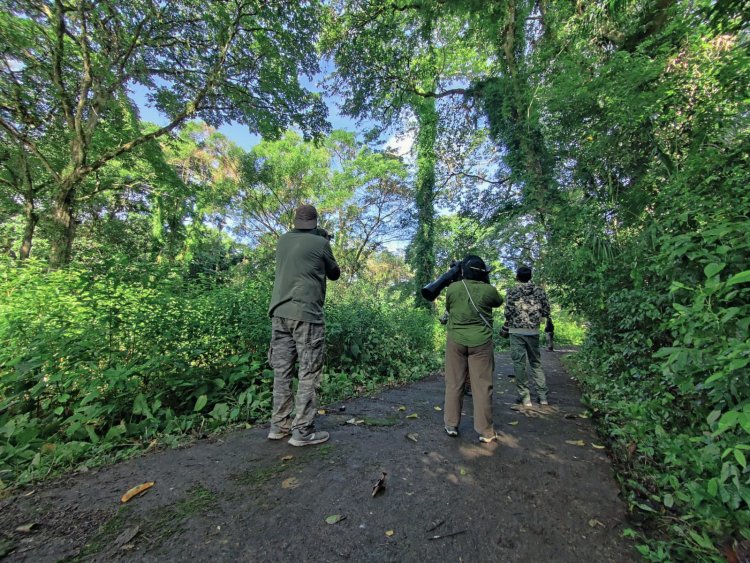
However is was fortunate sight Small eared Kingfisher in the mangroves. Here we got to see the Andaman Cuckoo-Dove, Andaman Coucal, Andaman Woodpecker, Andaman Drongo, Andaman Treepie, Andaman Yellow throated bul Bul , Andaman Bulbul, Andaman Green-Pigeon, Andaman Cuckooshrike, White-headed Starling and Andaman Flowerpecker.
Within minutes the call of an Andaman black woodpecker was heard and moments later we got our first sighting of this striking bird with a crest !
Andaman Woodpecker
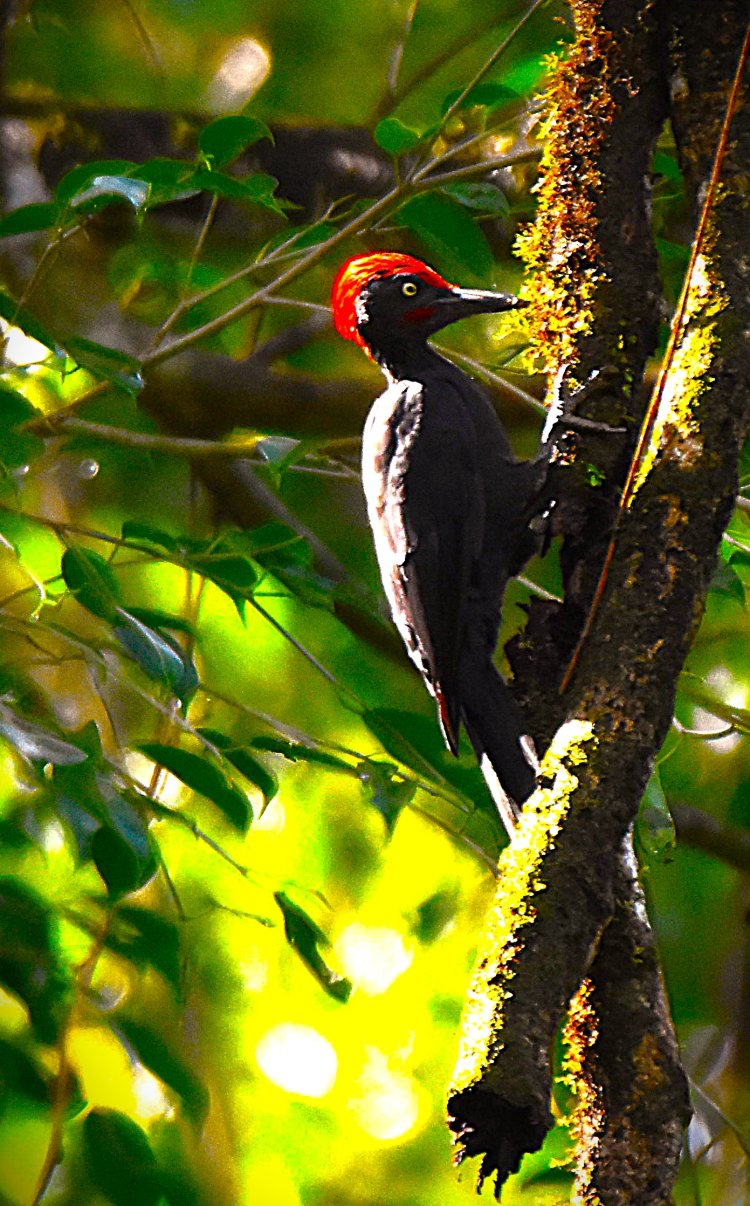
Andaman Yellow throated Bul Bul
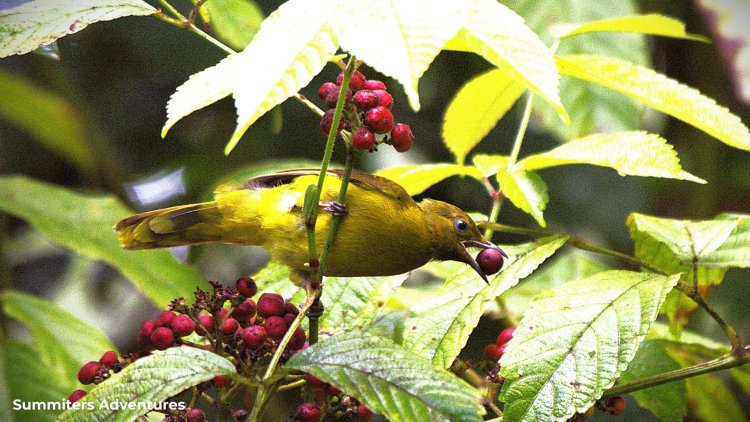
Sippy Ghat
No birding trip to the Andamans is complete without a trip to water bodies especially those in and around Sippy Ghat. We were going around lookinf for much targeted bird species - The Andaman Teal. The apex target species is of course the Andaman teal or the Sunda teal seemed have not arrived till, was the reply from our guide Shakti.After traveling length and breadth of waterbodies and scanning for them.
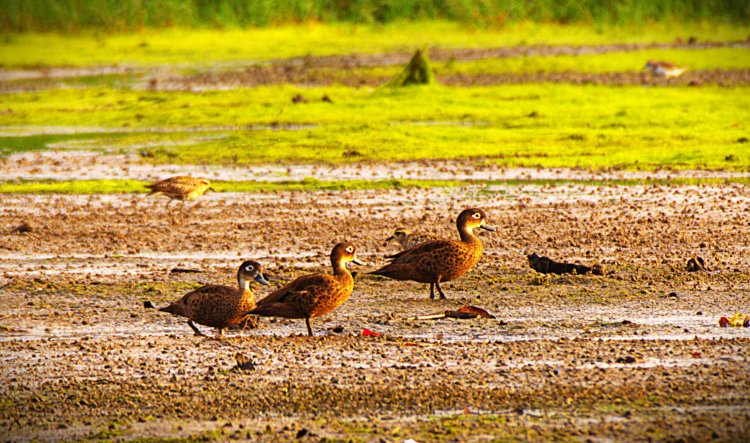
Finally a small family was identified at a lake fostering on the lake bed.
We must have been there for at least more than a hour and were so engrossed in lining up the duck whizzing past that we almost did not notice us.The setting sun added beauty to the landscape.
It was surprisingly unperturbed and gazed unflinchingly at us from the reeds on the water’s edge barely 50 metres away!
He added these are said to be critically endangered a few years ago but have gradually been making a comeback thanks to their protected status.
Apart from the teal there are a lot of other interesting species to be seen along the banks.
Shoal Bay
This area is home to a few ruddy kingfishes. Thanks to Shakti within moments of getting here we get a great sighting! Although not endemic to the Andamans, the distribution of this bird is very restricted and I was thrilled at the opportunity to see and photograph it amidst mangroves.
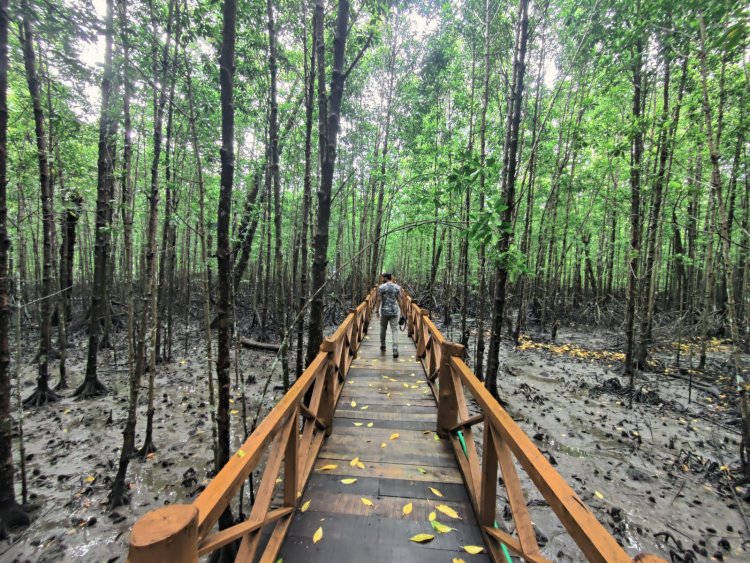
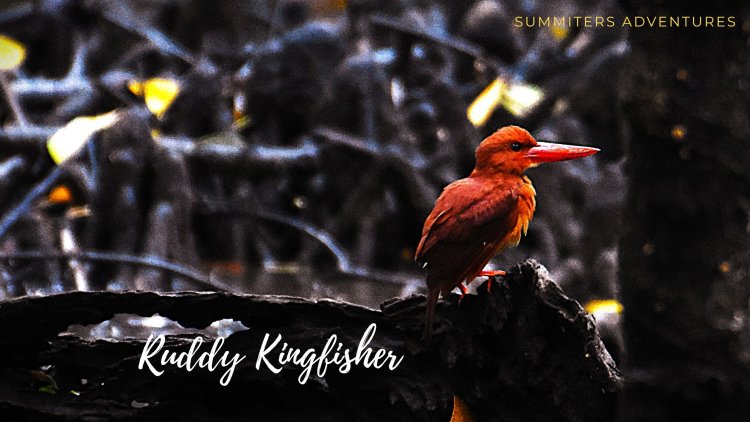
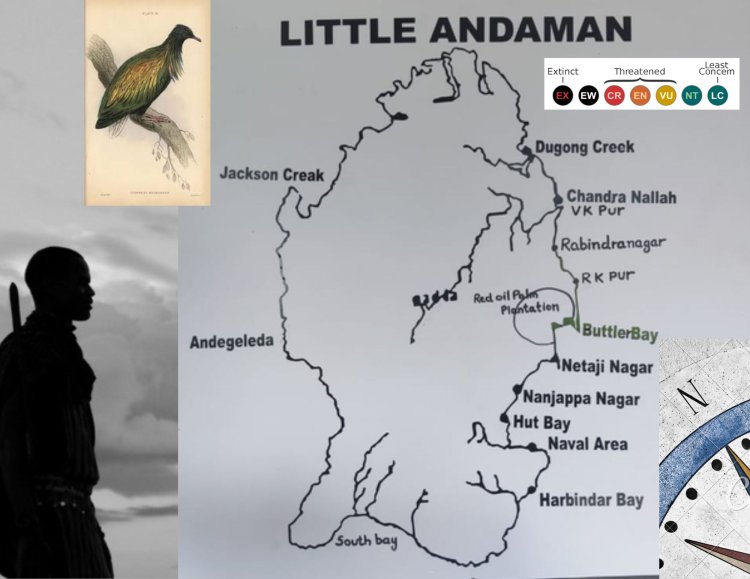 Further south of Hut Bay you reach to a place called Harminder Bay, from here there is a trek (straight walk, no ups & downs) of 8 km one way. We took a diversion to sight another Endemic Beach Thick Knee. After about 2-3 walk on the sandy shore our guide Kishore and Jabili were able to spot a pair feeding on fiddler crabs. They might had noticed us and they began to move toward the sea. After few capture, all of a sudden it began to rain like cats and dogs. We left them undisturbed and took shelter a palm tree.
Further south of Hut Bay you reach to a place called Harminder Bay, from here there is a trek (straight walk, no ups & downs) of 8 km one way. We took a diversion to sight another Endemic Beach Thick Knee. After about 2-3 walk on the sandy shore our guide Kishore and Jabili were able to spot a pair feeding on fiddler crabs. They might had noticed us and they began to move toward the sea. After few capture, all of a sudden it began to rain like cats and dogs. We left them undisturbed and took shelter a palm tree.
During the course, I could spot of collared KIngfisher from the shade quitely sitting on bark of tree and drying its feathers.
The trail goes to pristine evergreen forest on one side and sea shore on other. The trail ends at light house, which is southern most tip of Little Andaman.
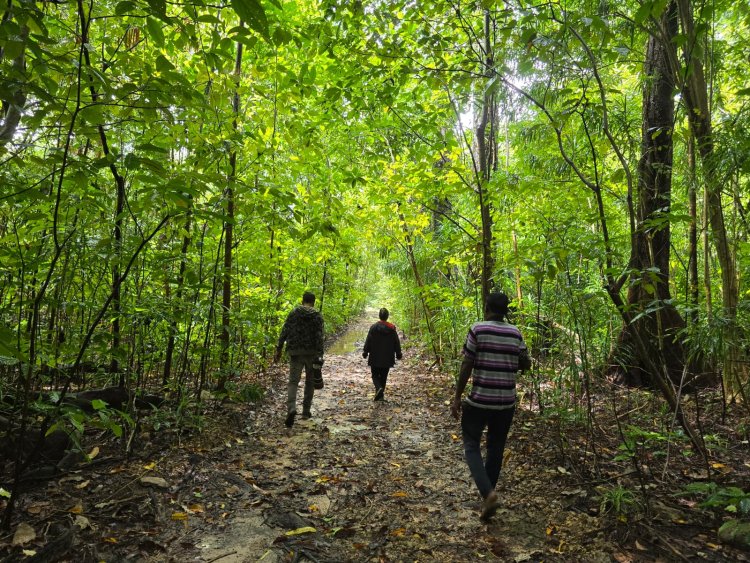 One of the most memorable walks through amazing forest, but extremely humid. But all these efforts are worth just for a glimpse of one of the most elusive & shy bird, Nicobar Pigeon. Even though it feeds on the ground, even a little sound or vibration causes it to fly and settle in some dense foliage. Apart from Nicobar Pigeon, we also saw Andaman wood pigeon, Andaman Cuckoo Dove, Asian Fairy Blue Bird, Black-naped Oriole etc…
One of the most memorable walks through amazing forest, but extremely humid. But all these efforts are worth just for a glimpse of one of the most elusive & shy bird, Nicobar Pigeon. Even though it feeds on the ground, even a little sound or vibration causes it to fly and settle in some dense foliage. Apart from Nicobar Pigeon, we also saw Andaman wood pigeon, Andaman Cuckoo Dove, Asian Fairy Blue Bird, Black-naped Oriole etc…
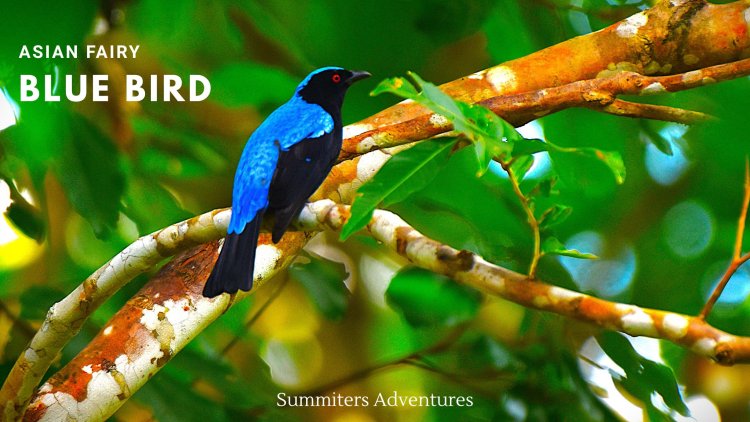
Sea shore of Hut Bay also gave us great views of my lifers, Beach Thick-knee, Oriental Pratincole, House or Pacific Swallow, & Red-throated Pipit, along with Greater & Lesser Sand Plover, Eastern Yellow Wagtails, Andaman Wood Pigeon, Greater Short-toed Lark etc…
Andaman Wood Pigeon
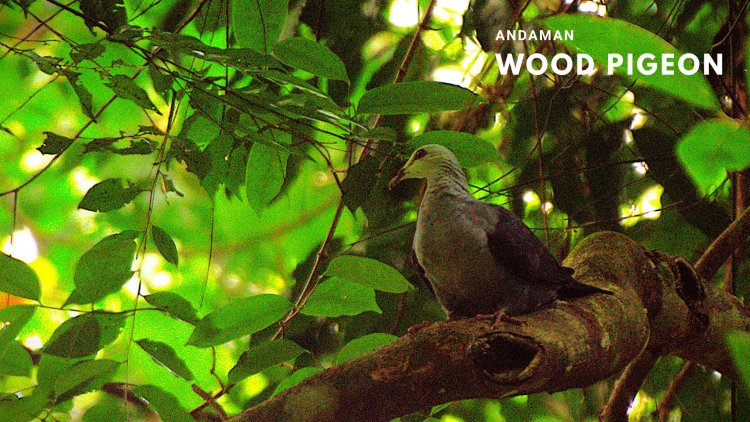
Beach Thick Knee
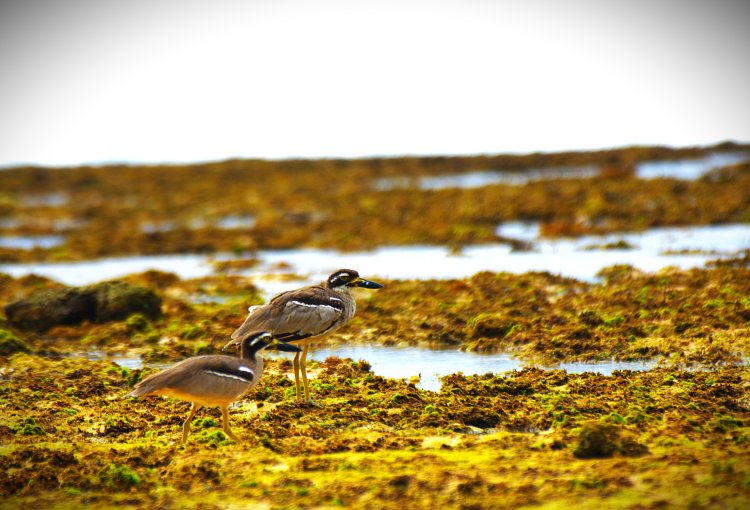
My lens was transfixed on Nicobar Pigeon. As it had rained heavily, we had to traverse through the bushes to overcome puddles.Suddely walking through the palm trees, i heard a fall in the bushes and soon Kishore identified it as a Green snake.It was bout 2 feet in length approximately.
I am still confused between both species, wheather its Ornate tree snake or Andaman green bronzeback
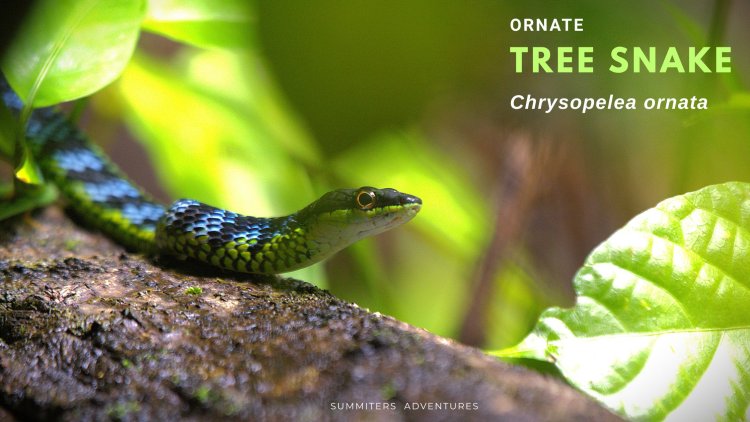
The flying snake usually launches itself into the air from high up in a tree. However, it doesn’t actually fly, as its name might suggest, but instead glides by extending its ribs and pulling in its underside.
During the exploration, Vinay spotted a moth through his keen observation which we would missed it.The moth was resting below the leaves underneath of canopy.It was Lyssa zampa, the tropical swallowtail moth or Laos brown butterfly. It is known for being an unusual diurnal (day-flying) and nocturnal moth
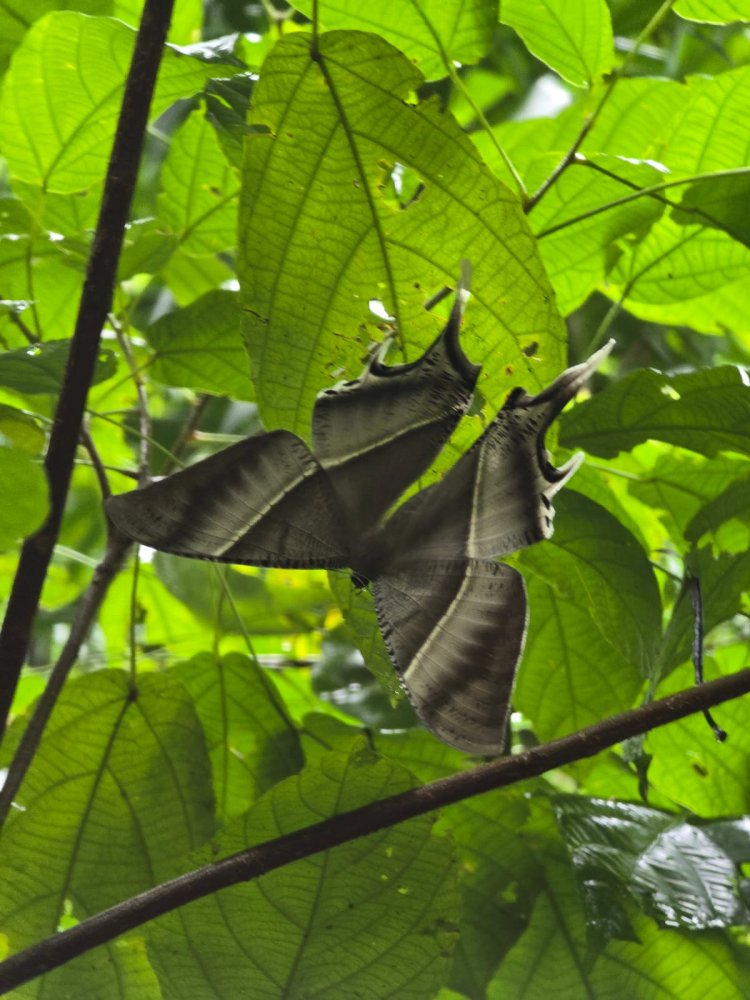
The night trail was also eventful with sightings.We also got an opportunity to see Andaman Barn Owl also called as Andaman Masked Owl.
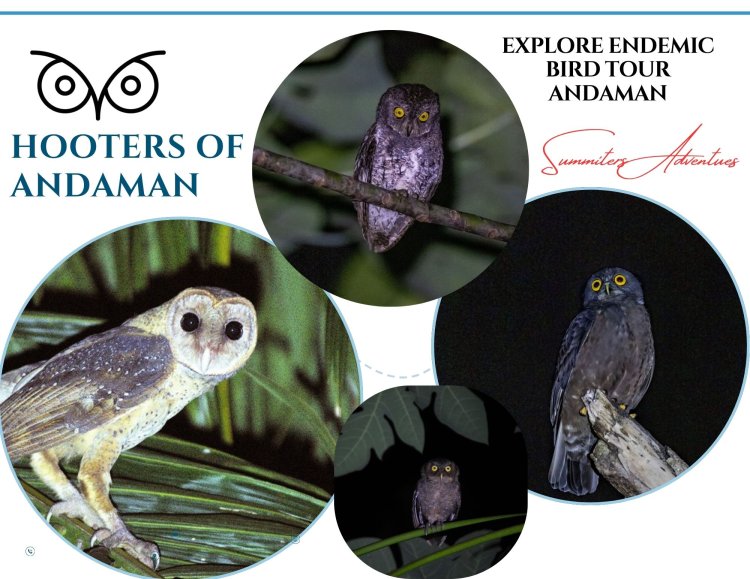
Andaman Humes Hawk Owl
Normally if not disturbed the owls normally respond at roosting places.Hawk owls responded willingly to a recorded call. Between the two, sightings of the Andaman hawk owl (Andaman boobook) (above) were more frequent than Hume’s hawk owl.
Our guide Shakti is one of the most enthusiastic guides I have ever had the pleasure of birding with. He is a person who sticks to time and puts his heart, soul into his job ! Typically he would ask us to stay put while he ran off into the forest. Once he located a bird he’d come back to fetch us.
Andaman Boo Book
That evening’s pattern was the same. He’d leave us standing in the dark in the middle of an eerie place and take off. We’d see his torch beam scanning the trees for owls on the periphery of the field.More than birding he is concerned about the safety of guests too.
Andaman Scops Owl / Waldens Scops Owls
Three endemic owl species in 2 night was more that we hoped for and really set the tone for the rest of the trip!
The other forest owl that is endemic to the Andamans is the Andaman scops owl and we got several sightings of this otherwise elusive species later in the trip
Andaman Mask Owl
It was very tricky to spot this owl,as it normally comes out during dark.Though multiple visits to multiple sites and hours of wait beared no fruit. Pradeep assistant guide gave us confidence of sighting them in Little Andamans ; Face to Face.
Finally we made it with the assistance of Kishore, who has been observing them since decades.
On the last day our trip, before heading to meet the hooters and to escape from the humidity.We arrived at the base of White Surf waterfalls after a short walk in the forest.
The final parting shot of Mask owl as we exited the woods was a lifer !
Without a second doubt this was a wonderful trip. As we were able to identify almost all endimics on list. But if I had to choose birds that really make it extra-special then it would have to be Vibrant Nicobar Pigeon. A Shy & a Sounds less bird indeed !.
If anything persuades me to visit little paradise again is for sighting it Face to Face !
Few tips & Recommendations for you
